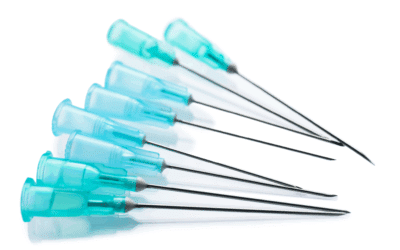
Here at Novera: Headache Center we believe in prevention as a key principle for keeping migraines at bay, and we understand how defeating it can feel when you realize an attack is beginning to creep up and interrupt your day. While there isn’t one single foolproof way to stave off that migraine every time, there are a few tried and true tips you can turn to in case you find yourself needing relief fast.
- Cold compress
Using ice to deal with pain and inflammation has been around for years, so why not use it for your headaches and migraines? Applying cold compresses to the head or neck reduces inflammation, slows nerve conduction, and constricts blood vessels which all help ease headache pain. Due to different neurological pathways to the brain, it also allows the body to focus on a different sensation other than head pain. So how do you use it? You’ve got a few options. A standard ice pack or frozen bag of veggies may be sufficient, however, you can also make your own cold compress by filling a bag with ice, wrap in a towel, and apply to your head or neck. A study performed in 2013 focusing on ice and migraines supports the use of a neck wrap ice pack. This will provide more coverage to the area, as well as a bit of comfortable compression. Ideally, you want to apply the ice pack for 15-20 minutes at a time. Be sure to take the ice off once your skin begins to feel numb to avoid damaging the skin. It’s okay to use the ice on and off every hour or so as needed.
- Change your environment
There are many different environmental factors that may trigger or worsen your migraine. This may include bright or flashing lights, loud noises, strong fragrances, or temperature changes. While you can’t control the weather, you may be able to set yourself up in a more comfortable environment to reduce your head pain. Oftentimes, people find that lying down or taking a nap in a dark room can help their symptoms when a migraine hits. Having a space in your home to shut away when your symptoms are acting up can be important to manage pain. It also acts as a comfort to know that if symptoms strike, you have a place to go where you can recover instead of stressing about it during the migraine attack. If you’re at work or running errands, it definitely creates a new challenge but having dark sunglasses or even a pair of noise-canceling headphones may be beneficial. There are mixed reviews on blue light glasses to reduce eye strain, but it may be worth a shot in case you’ve been staring at a screen throughout your day.
- Drink more water
You’ve heard it before and now we’ll say it again, hydration is crucial. Dehydration can not only trigger your symptoms but exacerbate them as well. The connection between hydration levels and migraines isn’t completely understood, but it may have something to do with the balance of water in the brain. While drinking water is important (it is recommended that women drink 2-3L per day and men drink 3-4L per day), there are other ways to boost your hydration. This can include: eating raw vegetables (like cucumber, lettuce, bell peppers, and celery), enjoying fresh fruit (especially if you tolerate sugar well), and incorporating more broths and soups (just be mindful of the amount of sodium canned or boxed soups may contain). You may also enjoy caffeine-free herbal teas like peppermint or chamomile, or add a little lemon or cucumber to your water to make it taste a little more interesting. It also helps to be mindful of habits that may be contributing to dehydration even when you feel like you consume a lot of water during the day. This may be from vigorous exercise, spending a lot of time in the hot sun, or consuming diuretics like coffee, black or green tea, sodas, alcoholic beverages, or even some herbal teas like dandelion root. This is where it is important to do some research about what you’re consuming before adding anything new to your diet. There are lots of ways to stay hydrated but consistency is key. Having a refillable water bottle with you throughout the day or setting periodic alarms to hydrate both serve as great reminders to drink up.
- Eat some ginger
Ginger root contains many beneficial compounds such as antioxidants and anti-inflammatory substances. It has been used for centuries to treat all sorts of ailments, but recent studies performed in 2021 in India indicate that it may be beneficial for acute migraine treatment. While the data may be too small to come to a definite conclusion, there is very little risk to trying it out as a way to manage your symptoms. Whether making a strong ginger tea by steeping freshly ground ginger in boiling water or just adding a few dashes to your glass of water, if you’re experiencing migraine headaches, give it a try. Not only does ginger help with head symptoms, but it is also a popular remedy for nausea. If you tend to get nausea with migraines, or even experience vomiting, consider this an excellent choice for a holistic remedy.
- Stay active
Now we understand when you have a migraine, going for a walk in the bright sunlight might sound like the exact opposite of what you want to do, but hear us out. Light exercise improves circulation and releases endorphins, aka the body’s natural painkillers. Whether that be a short walk (even up and down the hallway) or light stretching, try just 10 minutes of movement and see how you feel. In many cases, we see our migraine patients experience a decrease in activity because of their symptoms. This can quickly become a downward cycle of either migraines limiting your activity or even leading to an activity-induced migraine. We know how counterintuitive that may seem, but the patients that stay active and work to break this cycle often find the greatest relief. The human body is built to move, so just starting with 10 minute walk breaks every hour throughout your day can act as a preventative method to keep your symptoms at bay. Think about swinging your arms and taking bigger steps to loosen up the shoulders and back, while improving circulation to these areas. It doesn’t have to be completed all at once and every moment of movement adds up!
Consider any of the above suggestions the next time you find yourself dealing with a sudden migraine. The earlier you implement some of these strategies, the more effective they tend to be. With that said, even if you have to push through your pain a little longer than you’d like before finding yourself in a place to address your symptoms, some of these strategies may help to reduce the severity and length of time your symptoms last. Here at Novera, we take headaches and migraines seriously and aim to address the root of the issue with a holistic approach. If you frequently find that migraine headaches are getting in the way of your life more often than you’d like and medication doesn’t feel like the solution, give our office a call today to set up a free discovery visit with one of our clinicians.




